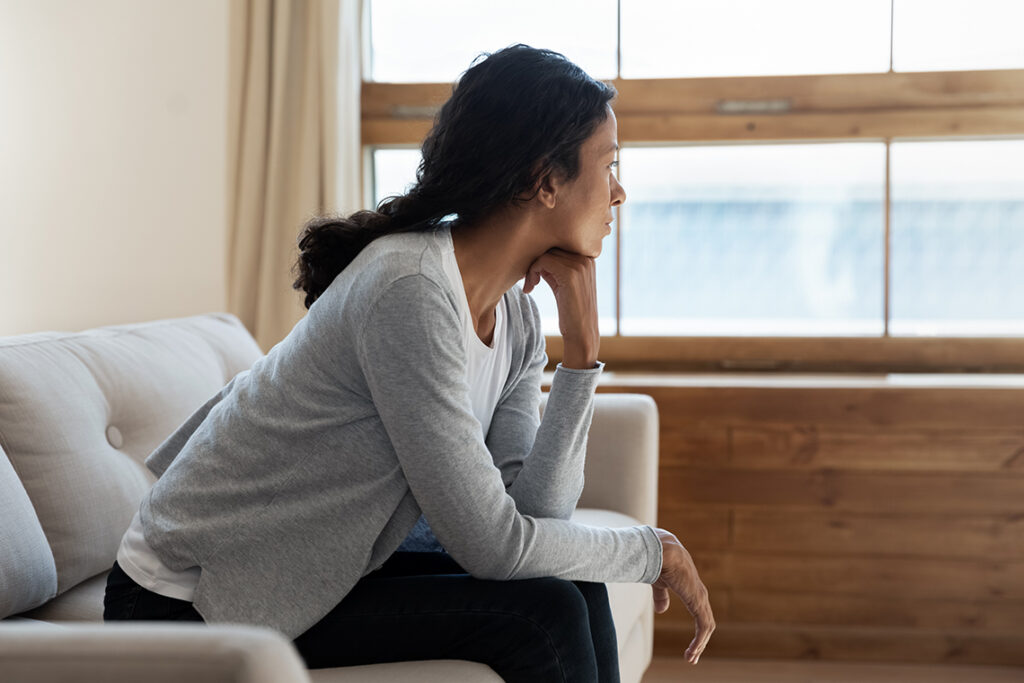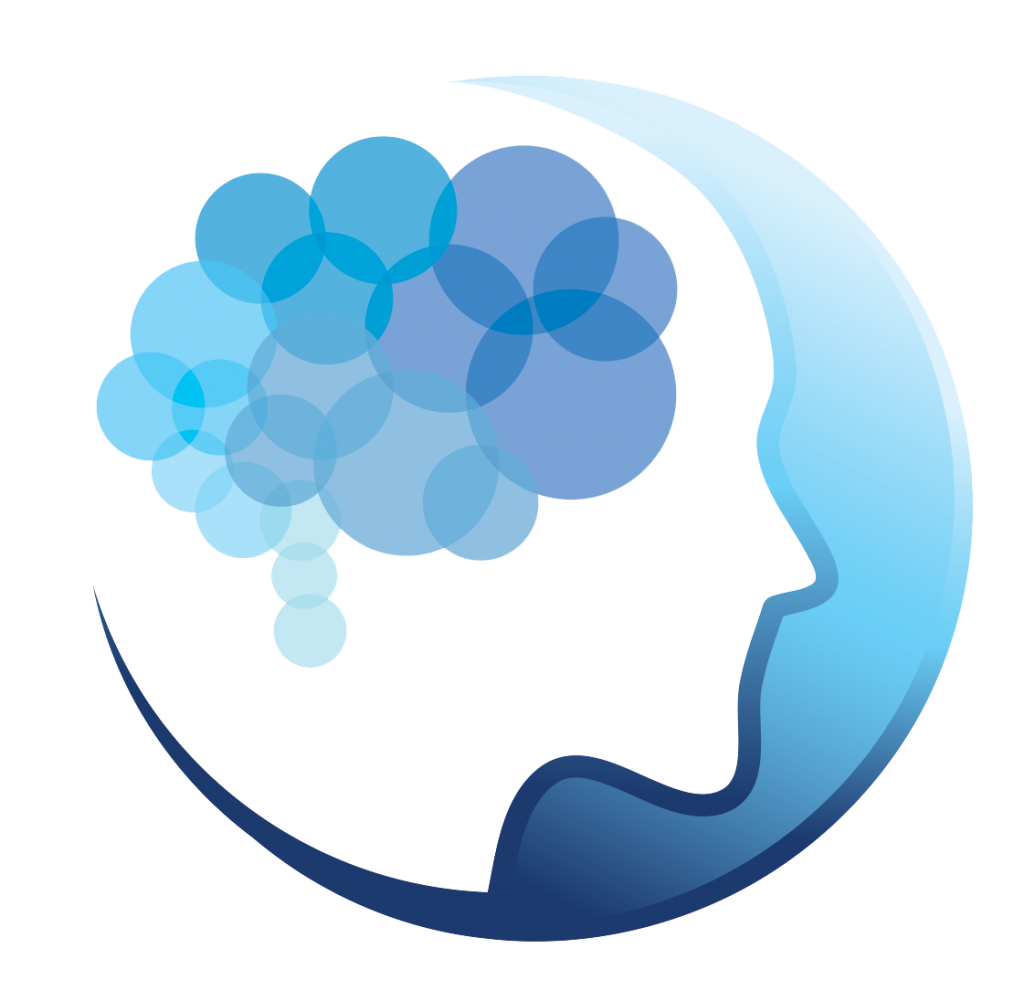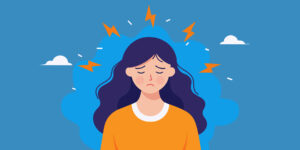Related Resources
For Opening-Up Anxiety
Exercises for Building Self-Compassion and Gratitude to Reduce Anxiety and Create Stress Relief
Join Dr. Kate in this brief video to learn easy ways to build self-compassion and gratitude into your day-to-day life. By entering into a state of gratitude or compassion, we can minimize the anxiety, stress, and worry that our amygdala can cause. Dr. Kate explains that the amygdala is in charge of processing all emotions, so when we enter into a state of gratitude, self-compassion, or understanding, we can shift our mental state into a much more positive one.
She teaches us two exercises that look to increase our states of gratitude and self-compassion. The first involves writing down three core things at the end of each day that you are grateful for. The size of the thing doesn’t matter, what’s important is focusing on the good things surrounding us that make us feel grateful.
The second exercise is writing three to five sentences that are self-compassionate. If this seems daunting, Dr. Kate explains that you can imagine that you are comforting a loved one through a hard time. By embracing these exercises, you will begin to feel the shift from worry to compassion.A Havening Meditation for Releasing Anxiety Around New Experiences and Creating Empowered Healing
Dr. Kate Truitt leads a guided meditation directed at creating a healthy relationship with change, which can be a worrisome and challenging time for many people. By welcoming in a mindful touch, she explains how slow and repetitive movements heal your system. You will immediately feel your mind and body regulating, and your brain will be enveloped in a feeling of calm.
During these repetitive, healing motions, Dr. Kate asks you to invite the worried energy to come forward. By listening to what information is causing the amygdala to worry, you will realize that it’s only data. Our survival instincts can make this data seem scary or stressful, but by taking those worries and concerns and placing them to the side you can find an empowering feeling state.
Once you have found this energy state, Dr. Kate invites you to bring this forward and identify it—whether it’s a color, shape, or feeling. You may notice that you have felt this energy before, and Dr. Kate invites you to search your mind for the previous memories filled with this energy.
While holding onto this new energy you have cultivated, you can bring your attention back toward the change. By placing the two states next to each other, Dr. Kate teaches you how to bring a positive outlook toward change.
Five Things Causing Opening-Up Anxiety. Let's Dig in and Find Your Worries
Join Dr. Kate Truitt in this video to explore the five main concerns causing your opening-up anxiety. She will explain how our brain loves patterns and resists change, which has made the past year all the more difficult. In order to cope with this change-filled time, we have developed a new “normal,” and so has our friend Amy the amygdala.
Dr. Kate asks us to narrow down the foundation of our anxiety, which we often use as a blanket term to describe distress, stress, and worry. The more we say that we are anxious, the more anxiety becomes a core part of our identity. Our brain is constantly listening to what we say and think, so in order to better our relationship with our anxiety, Dr. Kate asks us to focus on what is guiding the anxiety.
She instructs us to grab a pen and paper and write down the core five things causing us distress, stress, and worry—whatever they might be. From concern over returning to group gatherings or fluctuating quarantine weight, all concerns are valid. Our amygdala perceives concern as imminent danger, so it’s important to clarify what the core elements guiding our concern are.
A Havening Meditation for Caring for Your Worries and Your Fears
In this guided meditation, Dr. Kate Truitt guides us to move toward a healthy relationship with the fearful part of our brain. She asks us to welcome in healing touch during this meditation, which calms our brain during this experience.
She leads us to locate the energy in us that is concerned or fearful of the post-pandemic world. Dr. Kate asks us to identify if it has a size, color, or temperature so it’s easily recognizable to us in the future. Once we have found and identified this energy, Dr. Kate instructs us to gently place the energy further back so that it ceases to overwhelm us.
This space allows for compassion and curiosity towards this energy, and we can learn how to have a positive relationship with the fearful part. It is a valid part of our being, and we can appreciate that the fearful part of us loves us and only has our best interests at heart.
Opening-Up Anxiety: The Door Creaks Open on a Different World
By Dr. Kate Truitt
At the beginning of summer many of us began to be able to move about a little more freely as more and more people became vaccinated. With that increasing freedom, a new term began cropping up in the news. It’s called, “Opening-Up Anxiety” and it is ultimately about how we deal with change.
If you are experiencing unease about the thought of restrictions being eased after more than 16 months of relative isolation, you’re not alone. Studies suggest that about half of us will struggle as we begin to return to “normal” daily life and work. Part of this opening-up anxiety condition is grappling with the realization that we may not be functioning at our best.
Where is Your Head Right Now?

We have all been living highly patterned lives for many months—pretty much the same thing, day after day. Our brains have stagnated during this time from a combination of a lack of novelty, a narrow range of different experiences, and information overload. Even in normal times our brain is highly taxed just keeping up with the amount of information it is asked to process in a given day. In pandemic times, we experienced extreme shifts in information processing, and many of us were on screens for much of the day. And all the while, we were subjected to high levels of isolation, which is antithetical to us as attachment-focused beings.
Do you notice lately that your ability to complete tasks and your motivation to perform them is diminished? Are you having trouble being present in the moment with colleagues and friends? The problem with some of the degradation in our abilities is that they are subtle. In our minds we know that something is wrong, but we can’t quite put our finger on what it is. If you are noticing these things, it is likely the effect of months of chronic stress you experienced during the pandemic lockdowns.
Our executive functioning—the ability to concentrate, pay attention, recall information for later use, and to be motivated to attend to matters that are meaningful to us—has been highly impacted by stress during this time. Uncertainty—losing our ability to know when something begins and ends—also negatively impacts our executive functioning. So, pandemic brain fog, or cognitive fatigue, has been an overwhelmingly common effect of what we all lived through for more than a year.
Change is always a challenge, and it can range from inconvenient to absolutely scary. In this case, people are emerging from more than a year of staying home, being vigilant, and living in little protective bubbles, so it may tend toward the scarier side. People want to get back to a normal life, but they are understandably wary. Once not too long ago you might have been highly productive, but now it might be a struggle just to get out of bed in the morning and get physically and mentally ready for your day.
What Feels Safe for You?

Our amygdala—that fierce protector in the primal, survival part of our brain, which I call “Amy”—has been working overtime during the pandemic to keep us safe, because that is her primary job. When Amy senses that we are having doubts about our ability to perform and function, she will start creating stories about our worth and value that can create roadblocks for us moving forward.
The first step toward getting past these barriers is acknowledging that what is happening to us is normal. Our systems are struggling to be at our most highly performing selves, so we naturally have worries and concerns about how we will perform as we open up. We’ve also been living in a world of information telling us that being around other people is dangerous, because they can hurt us if they carry the virus, and we need to deal with that issue as well.
Moving Intentionally Toward Change

After acknowledging that the effects of the chronic stress we have been living through is normal, the next critical step in moving forward is being in loving relationship with the parts of us that are working so hard to keep us safe. Notice that I use the word “parts,” because it is important for us to be able to separate experiences, emotions, and thoughts into parts, and all of these parts are welcome because they all have jobs that ensure our safety.
When we look at our amygdala through a “parts” lens, and allow Amy to share her concerns and fears, it creates space from our anxieties and worries so we can lean into a space of compassionate curiosity. If we don’t change our fearful narrative, our brain will keep spinning those fear stories about our worth, in which we are a failure, or not good enough, or not providing value in our work environment. The more we get stuck in these loops, the more our capacity degrades, and the more our self-doubt and insecurity will escalate.
Our goal, then, should be to be in a relationship with Amy in which she can be seen and heard, but not overwhelm us.
As we are moving into this new post-pandemic world, and you notice related fears and worries showing up, I would like to invite you to step into your worry and start having conversations with it.
One of my favorite exercises is simple and designed to address your worry by deepening your relationship with it. I would like you to try this journaling exercise that incorporates writing with your dominant and non-dominant hands. A little warning: Your non-dominant hand may get a little tired during this exercise.
Conversations With Worry Exercise
- With your dominant hand, ask a question about your fears, worries, or concerns. Examples might be: What do I fear most about the world opening up and why? Or, I’m not motivated, what’s getting in my way?
- With your non-dominant hand, answer the question, asking the amygdala to share.
- Then, with your dominant hand, ask what you can do to help calm the fears, worries or concerns.
- So on and so forth, have a conversation. Imagine your dominant hand is a loving, supportive friend who really wants to help you learn about your fears. Ask good questions!
Remember, Amy just wants to be seen and heard. She wants to know that we are paying attention and taking proper precautions so we can stay alive. With this exercise your dominant hand is offering to help. This is an easy way to create a curiosity-driven conversation with your brain that honors Amy’s fears and worries.
If you find yourself in one of those moments where your self-doubt or you notice brain fog or a lack of motivation or increased fatigue, pause and take time to watch the first video in the sidebar of this article titled, “Exercises for Building Self-Compassion and Gratitude to Reduce Anxiety and Create Stress Relief,” for more things you can do your brain down and reduce stress so that your thinking brain is able to come back online with the level of capacity and function that you are accustomed to. In this video I reference an exercise called CPR for the Amygdala to help ease stress and anxiety. You can learn more about this exercise at this link, and also at this one. You can learn to practice it here, and also practice it here.
We are all struggling right now, and that is normal. The literature shows that many of us are being emotionally impacted in these times. Use the power of self-compassion and take intentional steps to give your brain a break and also give yourself some space. We’re not going to be exactly who we used to be—we’re creating a new normal, and that’s O.K. and even exciting. Take time to watch and join in on some of the other videos in the sidebar to help you in your new journey.










